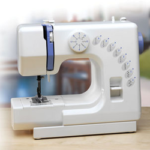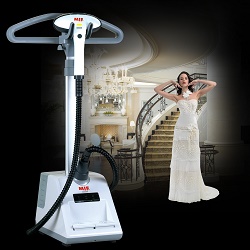What are sewing machines
Why does a simple user need information about the species diversity of sewing devices? Then, to pick up a really necessary apparatus. This knowledge will save the budget from unnecessary financial expenses - knowing the types of sewing machines, when buying, you can only focus on current production needs.
Content
Type of sewing device control
What are sewing machines? There is a general separation of such a technique, including three types:
- working on the mechanical principle;
- electromechanical models;
- devices running the computer.
Mechanical models
Already from the name it is clear that this option works thanks manual exposure on all elements of the design.Almost all of them are old-fashioned devices, but even on nineteenth-century machines, it is quite possible to sew after debugging equipment.
The principle of operation of a mechanical typewriter is predictable - basically, such a device is capable of sewing only in a straight line (these are mainly models of the "Podolsk" or "Singer" type). There are among them both manual and foot drive. There are among the mechanical heroes and those who are able to work with a zigzag stitch, for example, "The Seagull".

The advantages of these machines include the fact that they almost never break. A significant disadvantage of working with them is the limited functionality and the requirement to customize for each type of fabric.
Electromechanical Assistants
Under this technique refers to most of the modern devices. Unlike mechanical analogs, the electric drive located in a pedal participates in their work. The electromechanical machine is endowed with a multitude of talents: it is able to perform a large variety of different seams, sew on buttons, darn, and even make loops. Stitch selection can be done by special wheel.
Popular brands of such devices are Bernina, Janome, Family, Brother Pfaf, Juki, Singer and others. Prices for such models are quite affordable for the average consumer. An example of this is the Brother LS-2125 - it can be purchased for 7300 rubles. Fourteen sewing operations, the ability to work with hidden and elastic lines make the model a necessary acquisition for dressmakers of any level.

Sewing mini computer
Devices having software, declare unlimited functionality of their capabilities. Each such device is a mini-computer with a microprocessor. For the convenience of the user built-in screen. The variability of opportunities in many of the models is “overwhelming” for a hundred. With such a device it is impossible to make a mistake - the system will give a recommendation on the selection of the fabric, the strength of the puncture.
Among the established models distinguish brands Bernina, Brother and others. The cost is several times higher - from 20,000 rubles, but in this case, it is offset by the ability to perform more complex elements (up to recording a sequence of steps and embroidery).
For example, the popular Janome DC 4030 will cost 22,500 rubles. Management is fully electronic and includes 30 sewing operations and the ability to work with quilting, sew in the legs and sweep.

Sewing machine Janome DC 4030
More expensive models also imply the presence of embroidery blockthat makes the machine just an indispensable device. Here is a completely different level of assembly and production of parts, and electronics invested approximately two thirds of the cost of the device.
Classified by other key criteria.
We'll have to work with fabrics of various textures - they differ in tensile properties, density and other criteria specified in the requirements for sewing devices. And this concerns, first of all, a stitch - it must fit under the stretchability of the cut fabric. If this requirement is not observed, the threads will simply break. Options weave yarn divide devices into:
- shuttle (running shuttle stitches);
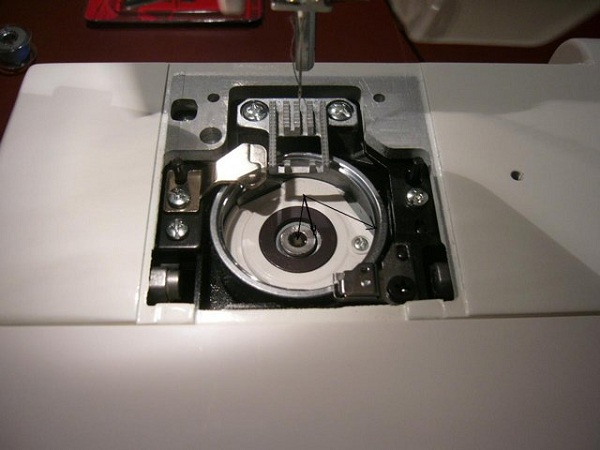
- chain (chain weave).
There is even a statistics indicating that 76% of all work is performed on the shuttle technique, 24% on chained devices with different numbers of threads.

- single needle;
- with two threads;
- three-needle;
- multi-needle.
The next parameter is number of needles. In this case, the classification of sewing machines divides them into the following devices:
Have a sewing machine and its own specializationdividing them into universal and special devices.
- Versatility helps devices perform a wide range of operations. By the way, in especially “advanced” models, the qualification of the operator plays an important role.
- Special devices are based on universal devices. To make it easier to perform certain functions, they are supplied with certain devices.
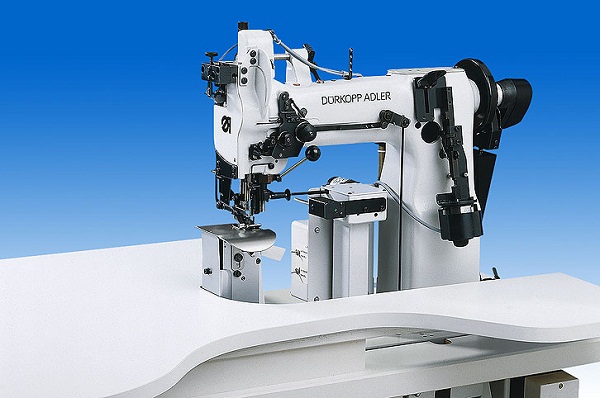
Special Core Sewing Machine
Classified cars and by way to automate work. Accordingly, the units are on:
- automated devices;
- non-automated;
- semi-automatic;
- automatic machines.
The technological aspect also affects the classes of sewing machines:
- straight stitch;
- working zigzag line;
- overcasting (grinding-wrapping variant);
- to perform a hidden line;
- looped semi-automatic;
- semi-automatic sewing buttons;
- semi-automatic, making barrels and accessories;
- long-semiautomatic typewriters;
- apparatuses for embroidery and decoration.
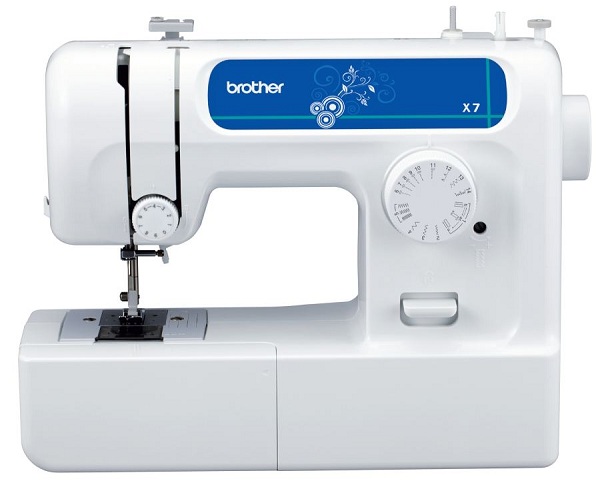
Electromechanical sewing machine BROTHER X-7
Relevant and work speed. In this regard, the division goes to the following options:
- operating at low speed (the main shaft of the device rotates with a frequency of up to 2500 min-1);
- Models with medium speed capabilities (rotation range 2500 - 5000 min-1);
- high-speed kits (with a frequency greater than 5000 minutes-1 ).
The division into classes of sewing machines also affects the features of their constructions. Here are considered:
- where the sewing head is located;
- how big the sleeve is;
- how the platform is located;
- kind of platform.
The sewing head relative to the user can be located on the right, left, or directly in front of him. Depending on this, the cars will be right-, left-handed or frontal.
Under the departure sleeve refers to the distance from the needle to the sleeve support:
- the smaller version is 200 mm;
- normal reach (200 - 260 mm);
- long-sleeved models imply a departure of more than 26 cm (it even reaches a meter).
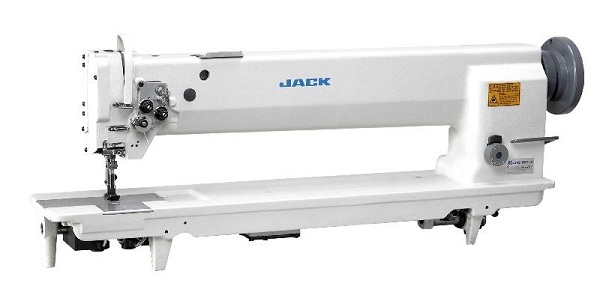
Sewing machine JACK-60698-1
The devices are also classified relative to the table top, positioning it at the level above or below the table top. The platforms, which are flat, hose, kolonkovymi or even special (made in the shape of the letter P, I, and so on) are also diverse.
Basic device selection criteria
Choosing a machine for yourself, you need to be guided by the following criteria.
- Device power. Not every machine can work with thick fabrics like coat or denim. Also, this parameter determines the force of the puncture.
- Body and parts material. Most economy-class devices have plastic "insides" - this is one more step towards acquiring an expensive, but high-quality option.
- Be sure to pay attention to type of shuttle. Vertically located will work much noisier than its horizontal counterpart. In addition, on the vertical it will be difficult to discern the remaining number of threads.

- Concerning line typesthen even professional seamstresses do not use all submitted. But if the device will loop for buttons in automatic mode, it should be chosen unconditionally.
- Finally, it is better to choose those cars that are equipped to the maximum with all kinds of feet and accessories.
Functionality of various sewing devices
There are other types of sewing machines that are designed for certain operations.
- For professional overcasting the edge of the canvas is necessary overlock. No imitation of a similar line in the shuttle device can compare with it either in speed,nor on the quality of work. For a start, a four-thread model is quite suitable.

- Spreader (flat sewing machine) forms a chain stitch - elastic and very stretchable. This is true when working with knitted fabrics. For the domestic level will be enough models with two needles.

- Coverlock combines the functions of three devices - rasposhivalki, overlock and grinder machines. For home use, this option is optimal. It is indispensable when working with knitted underwear, grinding gum in sportswear, braid.

- Embroidery machines - the most difficult of the existing. With the help of special programs and additional equipment, they help to create real masterpieces. It is quite possible to transfer even your own photo to the fabric, not to mention quilting, patchwork, appliqués and even lace cutwork.
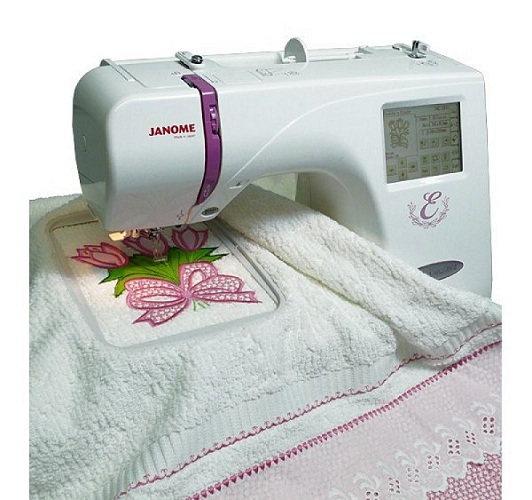
- Furwear model used at home much less frequently and is designed to work with fur products. There are also household models - quite compact and light. Externally, the device has a very interesting device: there is no looper, no hook, but only one thread. Instead of legs, it uses pressure discs.

Speaking about the types of sewing machines, it is worth remembering that the device purchased for home use should never be overloaded with inconceivable amounts of work - there are special industrial models for this. These options are designed to work with any type of fabric (in particular, models of the 22 class), but they need to be adjusted manually. It makes sense to acquire a device with such functionality already when you open your own business.

/rating_on.png)






